The Canadian/Swiss photographer Dawna Mueller is a passionate advocate for the planet. Mueller uses her powerful images to engage in a narrative about nature and climate change in fragile ecosystems. In addition to being a photographer, she is a former lawyer, environmental activist, public speaker and mentor. Her photography can be described as engaging, powerful, thought-provoking or simply: fascinating. But see for yourself. We recently met with Dawna for a virtual talk.
Dawna, you are a landscape photographer and photograph mountains and glaciers in extreme environments. What made you fall in love with this kind of landscape photography and when did you become professional?
I grew up in British Columbia, Canada and spent many years as a young adult working in the Yukon during summer vacation to save money for University. I traveled all around the Yukon, a bit in the Northwest Territories and as well in Alaska. This vast and raw landscape was so beautiful and completely different from my experience growing up in the city. It was my initiation into seeing things differently and appreciating wide open spaces. It is there that I developed a true love and appreciation for nature and its conservation. I’ll happily admit that I am a cold weather person, therefore I love snow and ice. I feel most at home in the mountains and winter is my favorite season, so it is natural that I would gravitate towards that as my subject matter. I have been a hobby photographer for over 30 years, but in 2015 I decided to take the leap and become professional. I studied at Cap Fotoschule in Zurich and launched Dawna Mueller Photography shortly thereafter. I believe what I lack in professional longevity I have made up for with immense passion.
You show most of your work in Black and White. What draws you to this versus color photography?
As a child I was a huge fan of Ansel Adams and had posters of his photos on my wall. I used to stare at them for hours analyzing the forms of the landscape as they were created by light and shadows. They mesmerized me. Those images created a huge desire to see this kind of vast and impressive landscape with my own eyes. I think that is one of the reasons I was drawn to northern Canada. I was thrilled to visit Yosemite three years ago and have a private tour of Ansel Adams’ home and studio, where I had the opportunity to buy one of his original prints. There is something very intense in a black and white image for me. I find it intimate and revealing. The image cannot hide behind color. Everything is revealed within the light and the shadows. That is not to diminish the work of many amazing photographers who work in color, but I simply see things in black and white. In fact, I even set my camera settings to monochrome so when I take a shot, I can immediately see if it represents what I had in my mind’s eye.
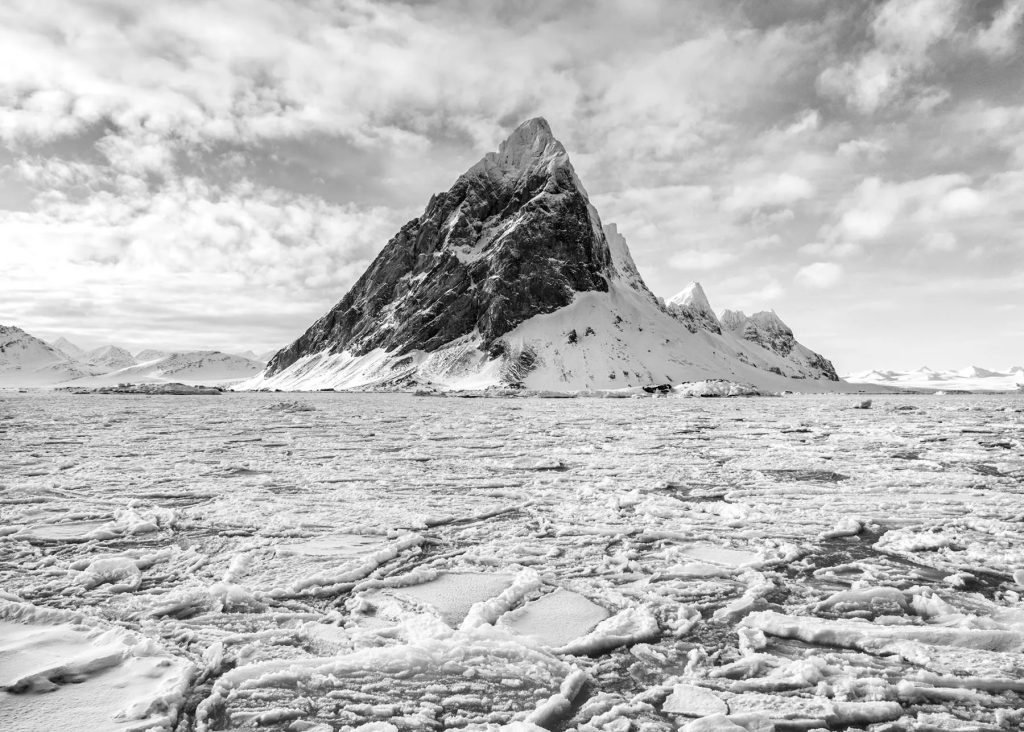
Burgabukta, Svalbard
You are not only a photographer exhibiting your landscape photos as Fine Art, but you are also an activist and speak about climate change in areas that you have photographed. How did this all come about?
That is a good question. It really seems like this has been my life’s journey. The exhibiting part started very organically in that I was asked by a small gallery in my local community if I would be interested in having an exhibition with them. I was still studying at this point but had a website and was already selling Fine Art prints to friends and acquaintances. I started sharing the stories of what I saw in the areas I photographed, first in Switzerland and then later in the Arctic and the Antarctic. The more I spoke about the things I was photographing like glaciers in retreat, warming temperatures, reduced ice and snow etc., the more I was invited to speak. I could immediately see that my photos were creating opportunities to have further discussions about issues that mattered to me. And I also realized that I saw things in the field that many have not had the opportunity to experience and it was important for me to share this. I think I was born with an activist personality, but it was during my time at law school in the early ‘90’s where I became acutely aware of many injustices, which could be rectified by human involvement. I think I am inherently an advocate when I feel strongly about a subject. Spending time in the Swiss Alps and seeing the dated signposts of glaciers in retreat, marking where they had been in the past, was like seeing tombstones mourning the death of these magnificent Behemoths. At first it saddened me and then it outraged me. Seeing the Rhone Glacier caves covered in blankets breaks my heart. I need to speak about what I see. It is times like these that I think are perfect examples of a ‘picture speaking a thousand words. I started speaking in schools, and then was asked to speak at a TEDx, and more recently at a Pech Kucha style event hosted by my Alma mater Peter A. Allard School of Law. The more I spoke, the more I educated myself and now it is kind of like a revolving door. A few years ago, I was invited to attend a weeklong climate reality training held by Al Gore and his Foundation ‘The Climate Reality Foundation’ where I became a Climate Reality Leader. One of the requirements of becoming a CRL is a personal commitment to go back into the community and educate and inform. One of the events I am most proud of is a four-day event I co-organized called Future Planet Forum 2019 held in the Engadin. We had a day-long Speaker’s Forum with experts, photography workshops and a Photo Exhibition showcasing our Arctic, Antarctic and Swiss Alp photos. The Lyceum Alpinum Zuoz was partnered with us as well as co-founders from Galerie La Suosta in Maudulain. The event ended with a viewing of James Balog’s ‘Chasing Ice’ and a dinner at the Hotel Castell in Zuoz.
https://www.youtube.com/embed/hGI0BKFdIIs
Dawna talks about Sustainable Futures
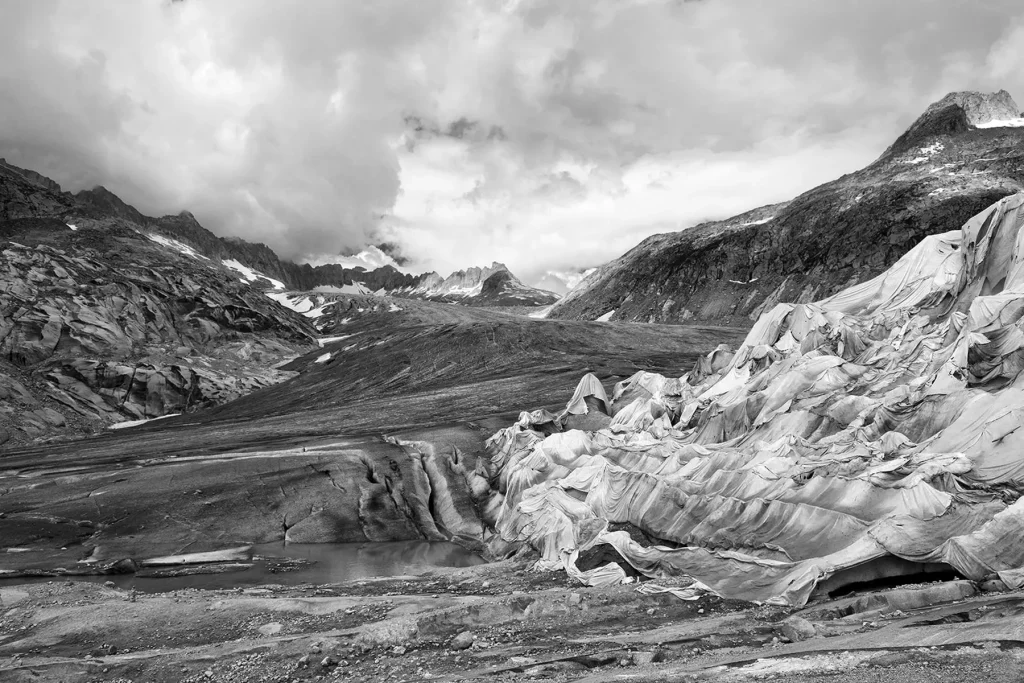
Rhone Glacier
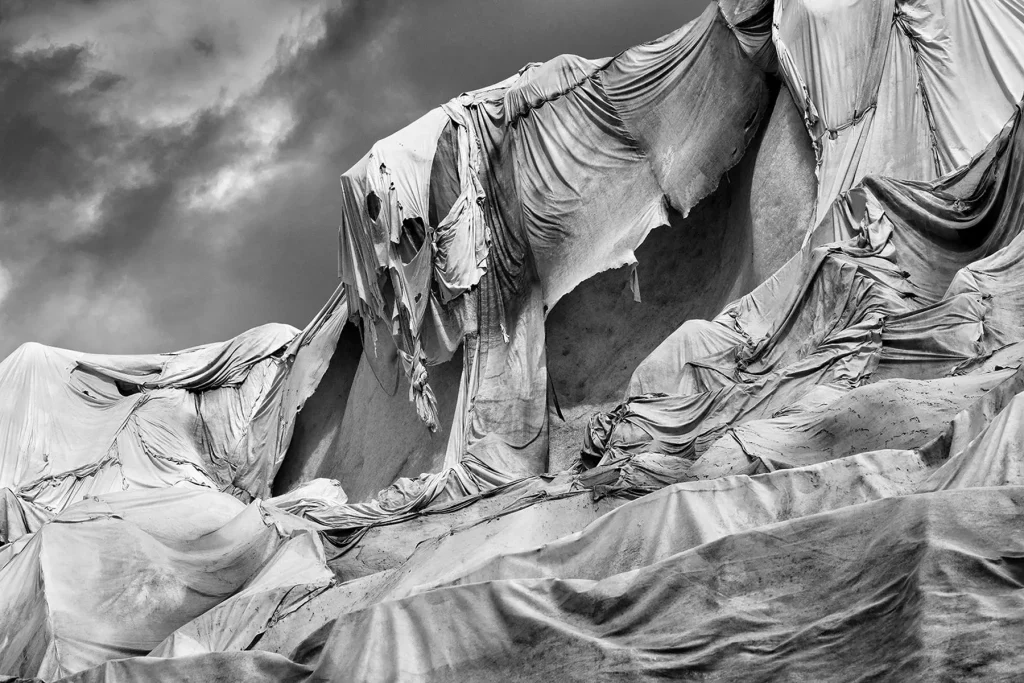
Rhone Glacier, Still life II
Photos from your Exhibition ̈Anthropocene – Vanishing Landscapes’, which first opened in Vancouver and then moved to Switzerland, are now published along with your article in ‘Saving Earth Magazine’. These amazing photos show an ethereal beauty of a seemingly fragile environment. What was the most fascinating thing about this project? What were your biggest challenges?
This has been a culmination of my work over the last four years and included photos from the Greenland, Svalbard, Antarctica and the Swiss Alps. The common denominator is that all of these areas are covered in snow and glaciers and it is rapidly melting due to global warming. So the impetus for me was to share the beauty of these environments because it is not possible to show the rapid destruction unless one can document the area with regularity. Plus I truly believe that when we really love something we will be more inclined to actively protect it. This is the approach I take in my speaking engagements; it is my intention to use photography as a conduit to creating connections. I want to show both the beauty and the fragility of the environments I am so privileged to visit. I want to inspire people to feel motivated and passionate about being the voice of change. Visiting all of these places was like a dream come true for me. They are fascinating. Absolutely wild, raw and other than penguins, polar bears and a few scientists, mostly uninhabited. These locations represent nature at its purest where wilderness rules and the mere mortal is unequivocally at the mercy of Mother Nature. So of course the challenges can be significant and intense. I think one of the main challenges in the Polar Regions is simply getting there, especially to Antarctica. It requires planning, organization, expense, and traveling. I usually plan anywhere from six months to one year in advance. Making sure I have the proper gear is crucial because the temperatures can range from a comfortable 15° Celsius to potentially dangerous -25° Celsius. I became a Penguin Clothing Brand Ambassador in 2019 and was very grateful to receive protective outer clothing to wear on a winter trip to Svalbard. An additional challenge is with the camera gear. Extreme temperatures can cause everything to freeze, especially at temperatures below -0° Celsius. So keeping batteries warm and charged, and condensation out of cameras and lenses is essential. A very significant challenge for me is dealing with my carbon footprint because I am flying to these locations and at the same time conscious that I am contributing to fossil fuel emissions. I had decided to reduce my travel in the future even prior to Covid19 and the whole world shutting down, and when I do travel I buy carbon offset either directly from the airlines or www.myclimate.org.

Scoresby Sound, Greenland
If you had to describe the perfect moment for the perfect photo what would it look like?
What is essential to me in my landscape work is to really connect to the environment I am in. It’s important that I spend some time in it, which is why in Switzerland I am constantly going back to the same place. I don’t have this luxury in the Polar Regions even though I have been a number of times. But I really need time. The photo presents itself to me when I can quietly sit amongst its beauty. One afternoon on the Antarctica Continent represents this moment perfectly for me. We had arrived at Neko Harbour and had a two hour landing where we could go off on our own. My partner and I hiked far enough away that we couldn’t see our boat or the others on our expedition. We climbed up to the top of the glacier, so essentially we were by ourselves. Then my partner walked off in the other direction and I found myself alone looking out over the most beautiful bay filled with small icebergs floating by. It was stunning and surreal and as I recall, it was very hot. I couldn’t see anyone. As I sat in this majestic and remote land on top of a glacier and not able to see another human, I succinctly remember feeling how small and insignificant we are as a human species. We are truly but a grain of sand in this universal microcosm and yet we are capable of making such an impact, both positive and negative. It was a very poignant moment filled both with absolute peace and also a sense of sadness. I took a few photos and while the mid-day sun was too harsh, the images I took are very close to my heart. I often think of this beautiful moment where I was at the end of the world alone on an iceberg with my camera set up on a tripod enjoying the moment and the magnitude of the beauty before me. That for me is ultimate bliss.
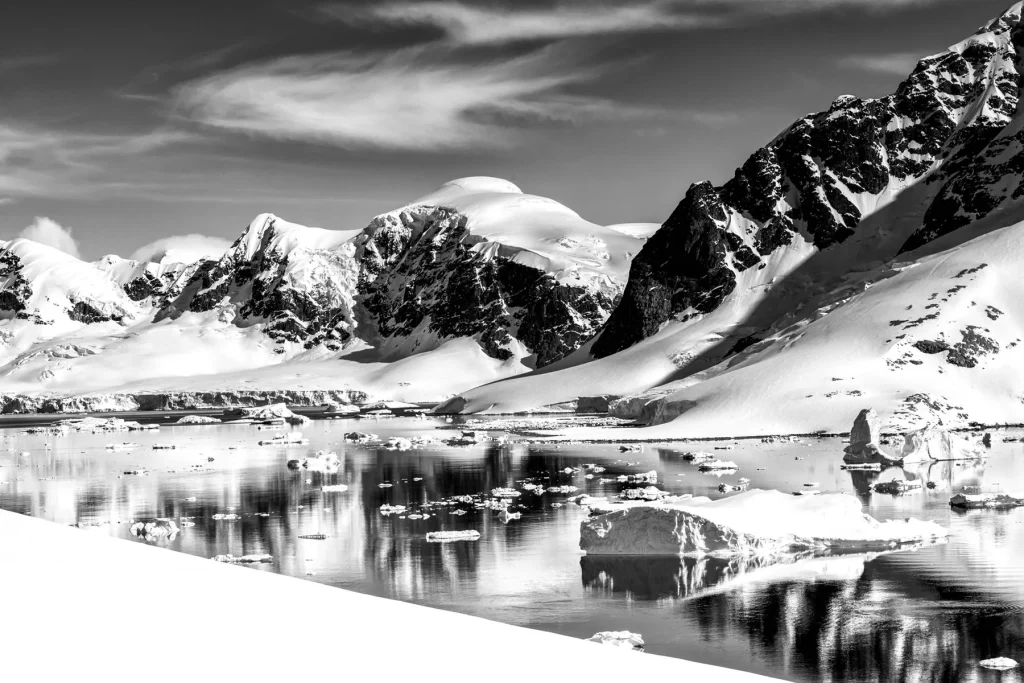
Neko Harbour, Antarctica
What is your approach to taking photos? And how do you choose your photos
There is a lot of planning going into my landscape photography, as I usually need to get to a location. I always do some research before I go so I know how the place looks and that allows me to calculate when I need to be there for the proper positioning of the sun. Of course checking the weather is crucial and I prefer stormy skies, so outside of a massive storm I would proceed with the trip. Once I have organized all of these coordinates, I then love to spend time in the place, essentially just being one with nature. Quietly observing and enjoying. I really appreciate taking my time. I never rush. It is more of a holistic approach where I am experiencing it all rather than just taking the shot. I turn the entire experience into an adventure, from leaving home to getting to the destination. It is a journey and I enjoy it all. Choosing the photos is often the easy part because they usually speak to me. It is the one that jumps out at me above all others. I usually see the composition that I want to capture after I sit in the environment for a while and that is usually the one that turns out to be the best photo.
Do you have a tip for our readers who also want to dig deeper into black and white landscape photography?
For someone interested in black and white landscape photography, I would suggest taking a look at photographers whose work they admire and study it. I have personally collected black and white photography for over 25 years and this has definitely helped to train my eye. I also look at photo books, which is problematic because I have limited bookshelves now! I think it is important to learn to see light and learn intrinsically to feel what makes a good photo. Then of course there are the essentials like understanding how your camera works and principles of photography. I am a huge proponent of education and whenever I want to learn something I do it best in a controlled environment like a classroom or an online course. But whatever one’s preference, there are so many possibilities to learn, either through photo clubs, courses, workshops, or seminars. The most important and invaluable tip I can give anyone is to take your camera and go out and photograph. As Henri Cartier-Bresson most eloquently stated, “your first 10,000 photos are your worst.” I am rather confident this is true!
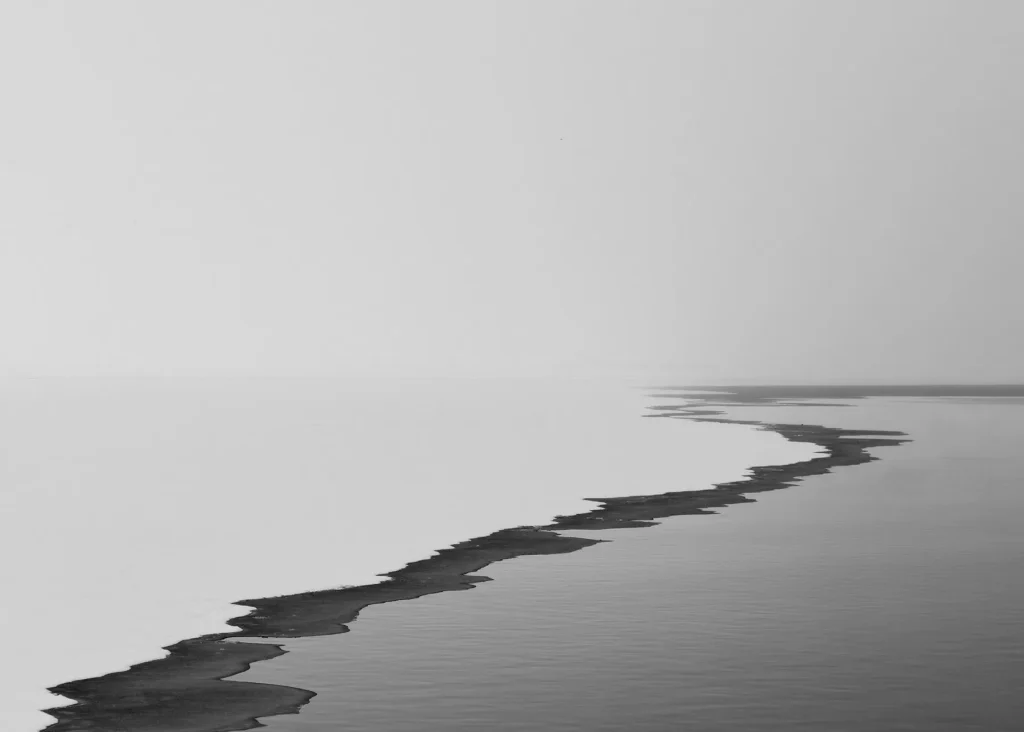
Hornsundbay, Svalbard
Dawna you have had 8 Exhibitions in both Canada and Switzerland in 3 years and have your work in private collections worldwide, including your Alma mater, Allard Hall School of Law. Additionally, you have spoken to thousands of individuals sharing your photos and passion for these environments. This is a lot to accomplish in such a period of time. What’s next for Dawna Mueller Photography?
Well, as we all know the world has changed dramatically in the last few months and everything has come to a standstill. This is a time of immense transition for the planet and its inhabitants. Many have lost loved ones, their livelihood and even their homes. At the same time, the planet is in a state of rejuvenation as a result of the reduction of fossil fuel emissions due to reduced industry, travel, and as well as many other environmental stressors. I have spent the last three months of this pandemic in Vancouver with my kids rethinking what the future looks like for Dawna Mueller Photography. It obviously will be different than what it was in the past and how it will look exactly I am unsure. But one thing is certain, and that is I will never stop being an advocate for the planet and sharing the beauty of it through my lens.
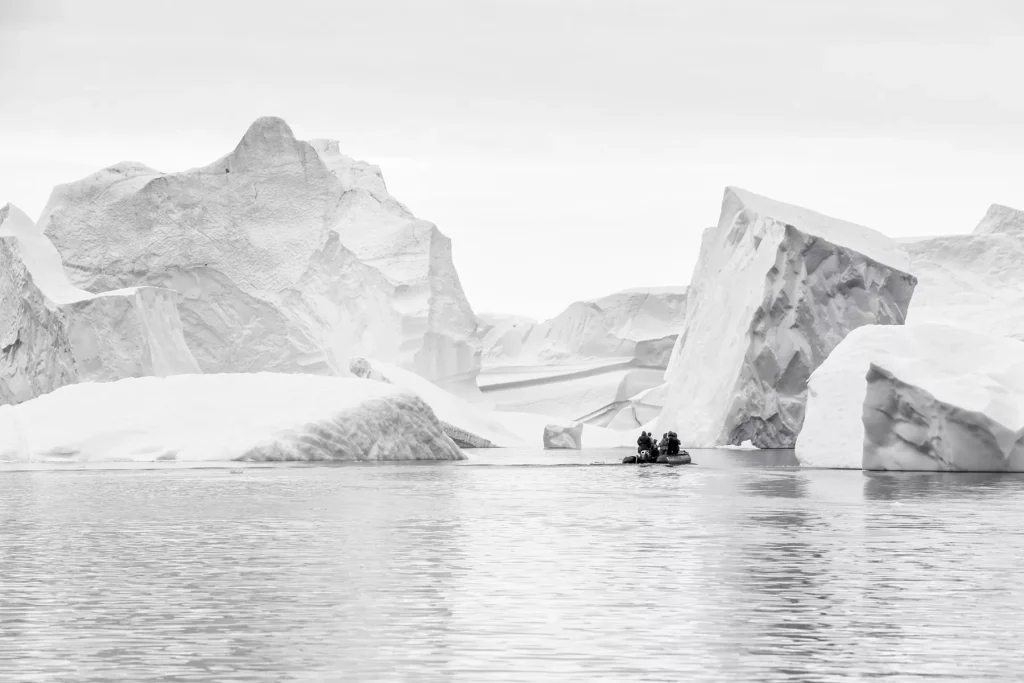
Iceberg Grave Yard, Scoresby Sound, Greenland
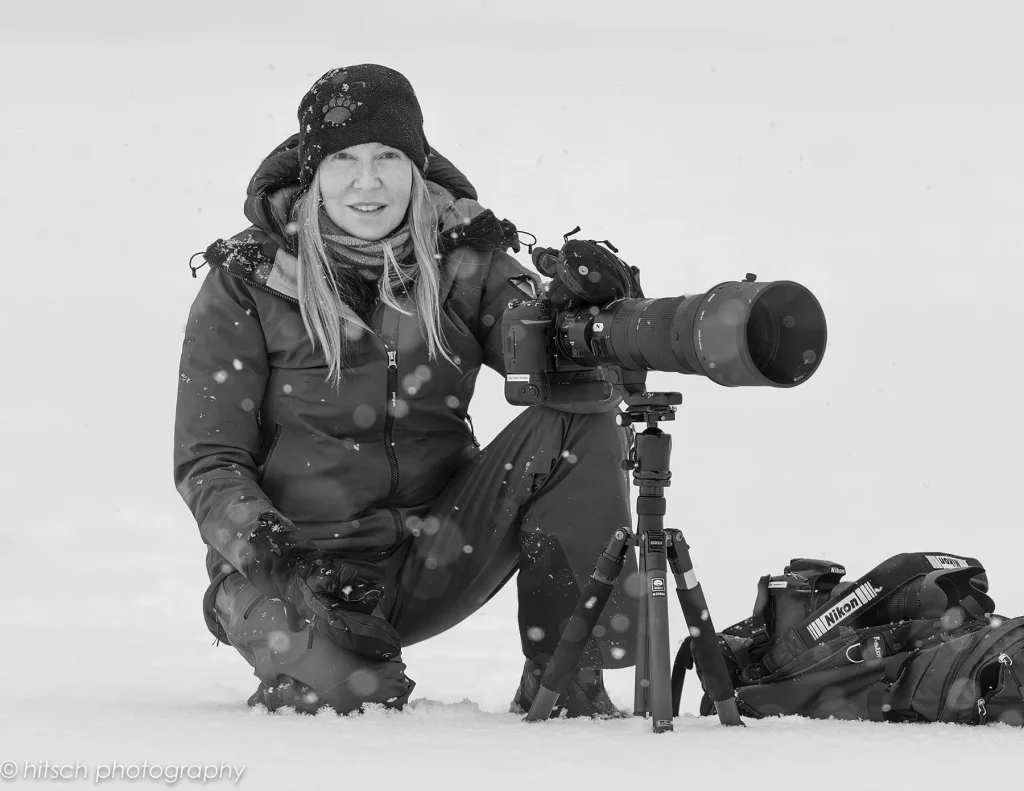
Dawna Mueller, photographed by Hitsch Rogantini
You’ll find more photos and current information
on the website of Dawna Mueller:
www.dawnamueller.com
Facebook: facebook.com/dawnamuellerphotography
Instagram: instagram.com/dawnamueller
Dawna’s TedX talk: youtu.be/EdZObXqZZGs
Header image: Iceberg I, Scoresby Sound





